

Auditory Digital « Representational systems (NLP) Representational systems (also known as sensory modalities and abbreviated to VAKOG or known as the 4-tuple) is a postulated model from neuro-linguistic programming regarding how the human mind supposedly processes and stores information.
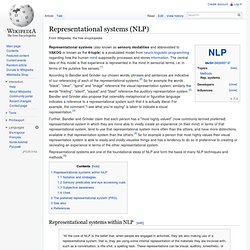
The central idea of this model is that experience is represented in the mind in sensorial terms, i.e. in terms of the putative five senses.[1] According to Bandler and Grinder our chosen words, phrases and sentences are indicative of our referencing of each of the representational systems.[2] So for example the words "black", "clear", "spiral" and "image" reference the visual representation system; similarly the words "tinkling", "silent", "squeal" and "blast" reference the auditory representation system.[2] Bandler and Grinder also propose that ostensibly metaphorical or figurative language indicates a reference to a representational system such that it is actually literal.
The most common arrangement for eye accessing cues in a right-handed person. Self-Mastery. NLP – PARTS INTEGRATION The super mega happy lucky jackpot version « TroyBakes NLP Therapy (NLPt) Specialist. This is a complete script for how to the NLP parts integration /Visual Squash.
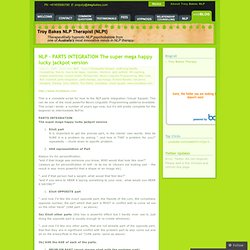
This can be one of the most powerful Neuro Linguistic Programming patterns available. This script i wrote a number of years ago now, but it’s still pretty complete for the beginner to intermediate NLP’er. PARTS INTEGRATIONThe super mega happy lucky jackpot version Elicit part It is important to get the precise part, in the clients’ own words. NLP Toolbox. – by Colin Smith, a licensed Master Practitioner of Neuro-Linguistic Programming (NLP) Better Relationships – Ten Top TipsHow to Raise Self Esteem: Part OneHow to Raise Self Esteem: Part TwoHow to stop the inner criticHow To Create Supreme States Of Mind That Empower You To Make Magnificent Changes…Surefire Way To Manage Your Fears While Leading A Happier, Healthier Life7 Surprising Keys to HappinessSack Your Shrink BY Using Your Frickin Brain For a ChANge!
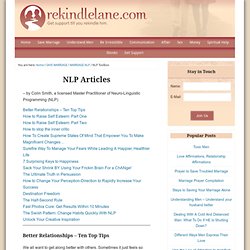
The Ultimate Truth in PersuasionHow to Change Your Perception-Direction to Rapidly Increase Your SuccessDestination FreedomThe Half-Second RuleFast Phobia Cure: Get Results Within 10 MinutesThe Swish Pattern: Change Habits Quickly With NLPUnlock Your Creative Inspiration. Overcoming Limiting Beliefs with NLP. Overcoming Limiting Beliefs with NLP. Limiting Decisions. Destroy Limiting Decisions. Did you make a limiting decision as you were growing up?
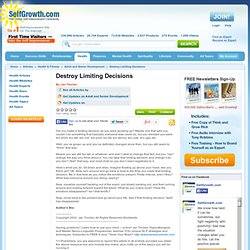
Maybe one that said you couldn’t do something that basically everyone else could do, but you decided you were too short, too tall, too rich, too poor, too fat, too skinny, too cute, too ugly, etc. Chunking. NLP Articles Articles The Importance of Doing what’s Important in Life by Jevon Dängeli.
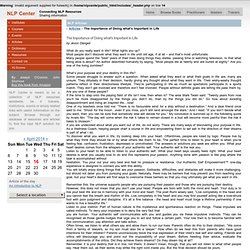
Sleight of Mouth. NLP Learning Strategy. In the previous section we looked at the presuppositions of NLP and introduced the learning strategy around which this entire website is built, a simple metaphor which we labelled the building blocks of NLP.
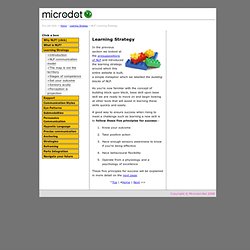
As you're now familiar with the concept of building block upon block, base skill upon base skill we are ready to move on and begin looking at other tools that will assist in learning these skills quickly and easily. A good way to ensure success when rising to meet a challenge such as learning a new skill is to follow these five principles for success:- Know your outcome Take positive action Have enough sensory awareness to know if you're being effective Have behavioural flexibility Operate from a physiology and a psychology of excellence These five principles for success will be explained in more detail on the next page.
Say what you mean. In the film ‘The Breakup’ the two characters played by Jennifer Aniston and Vince Vaughn have a blazing row that seals the end of their relationship after a dinner party that doesn’t go quite as planned.

If you’ve seen the film you might remember the exchange: “I want you to want to the do the dishes!” “Why would I want to do the dishes?” (You can remind yourself of the film on YouTube here) Now this may be the stereotypical example of the man in this exchange not getting the plot but the reality is that we both men and women spend a lot of their lives not getting the plot in their relationships.
NLP eye movements (motilitatea oculara) Aligning Perceptual Positions: New NLP Method. Aligning Perceptual Positions A New Distinction in NLP by Connirae Andreas, Ph.D. and Tamara Andreas, MM, ©1991 first published in Anchor Point, Feb. 1991 (Vol 5 No 2) – with minor edits April 2006 “Perceptual Positions” has been an important and useful distinction in NLP, one that can be used to enhance our flexibility, wisdom and resourcefulness.
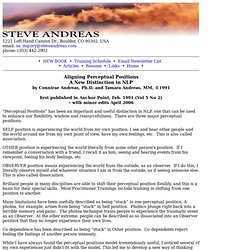
There are three major perceptual positions: SELF position is experiencing the world from my own position: I see and hear other people and the world around me from my own point of view, have my own feelings, etc. This is also called association. OTHER position is experiencing the world literally from some other person's position. OBSERVER position means experiencing the world from the outside, as an observer. Leadership DynamiX – Executive Coaching, Workshops and Forum. What Are MindSkills Techniques?
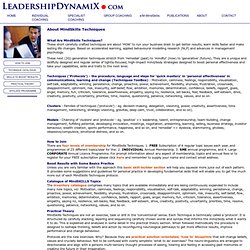
These short carefully crafted techniques are about ‘HOW’ to run your business brain to get better results, learn skills faster and make lasting life changes. Based on accelerated learning, applied behavioural modelling research (NLP) and advances in management psychology. These next (3G) generation techniques stretch from ‘remedial’ (past) to ‘mindful’ (now) to ‘generative’ (future). They are a unique and skillfully designed and regular series of tightly-focused, high-impact mind/body strategies designed to boost personal effectiveness and take your capabilities, skills and traits to the next level. Clusters - Families of techniques (‘protocols’) - eg. decision-making, delegation, visioning, power, creativity, assertiveness, time management, networking, strategic visioning, gravitas, deep calm, trust, collaboration, and so on).
NLP Techniques - Embedded Commands. What are the most effective NLP techniques and patterns?
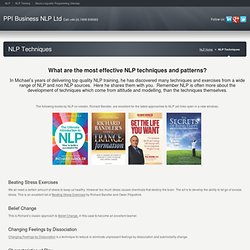
In Michael’s years of delivering top quality NLP training, he has discovered many techniques and exercises from a wide range of NLP and non NLP sources. Here he shares them with you. Remember NLP is often more about the development of techniques which come from attitude and modelling, than the techniques themselves. The following books by NLP co-creator, Richard Bandler, are excellent for the latest approaches to NLP (all links open in a new window). Beating Stress Exercises We all need a certain amount of stress to keep us healthy.
Techniques for Changing Minds. The Top NLP Techniques. NLP Your Self.